Hanging baskets can be hard work if they’re full of hungry and thirsty plants, but there’s a much lower-maintenance alternative if you fancy growing something different from the usual suspects (lobelia, petunia and fuchsias). Choosing plants that can tolerate – or even thrive – in dry basket conditions means you’ll have a less time-consuming feature and will save on your water bill, too! Many drought-tolerant plants look good in baskets all year, so you may not need to start them all over again from scratch in winter either. Here are some good candidates for a fresh and colourful hanging basket plantsthat need very little water.
Sedums

Trailing sedums were made for hanging baskets! They gracefully tumble over basket edges and some have stems dripping with cascades of flowers in summer. After a full growing season in a basket with compost mixed with grit, the plants will have spread and rooted themselves. A colourful as well as evergreen option for baskets, ‘Coral Reef’ has masses of bright yellow star-shaped flowers that will brighten up basket edges in summer.
Herbs
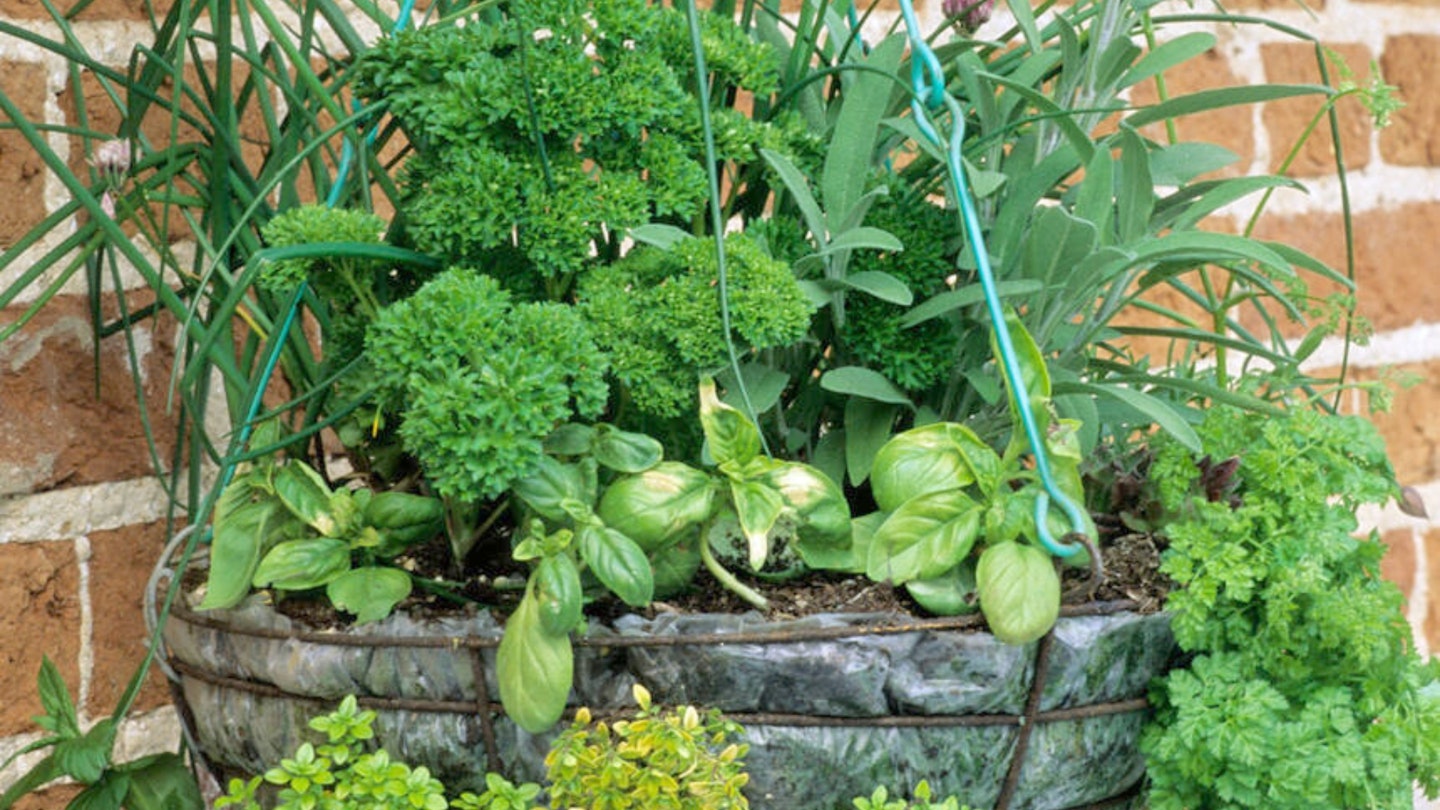
Mediterranean herbs love warm sun and although (like all plants) they will need some water in the early stages after planting, lavender, thyme and rosemary cope well with dry conditions. Lavender is useful for adding height to a basket (dwarf varieties such as ‘Munstead’ are best), as well as summer flowers. Creeping thymes are good for basket edges and will also attract early bees to the garden. Don’t plant herbs too deep or they can get wet.
Calibrachoas

These ‘mini petunias’ are free flowering, selfcleaning (they naturally shed old flowers so no need to dead-head) and elegant. They gently tumble over the edges of containers and two or three will smother the area around the outside of a medium-sized basket. They produce an amazing amount of flowers for the size of the plant. Available in warm shades of yellow, orange and red as well as pink and purple. Water for the first couple of weeks after planting then they’ll tolerate warm, dry weather very well.
Trailing pelargoniums
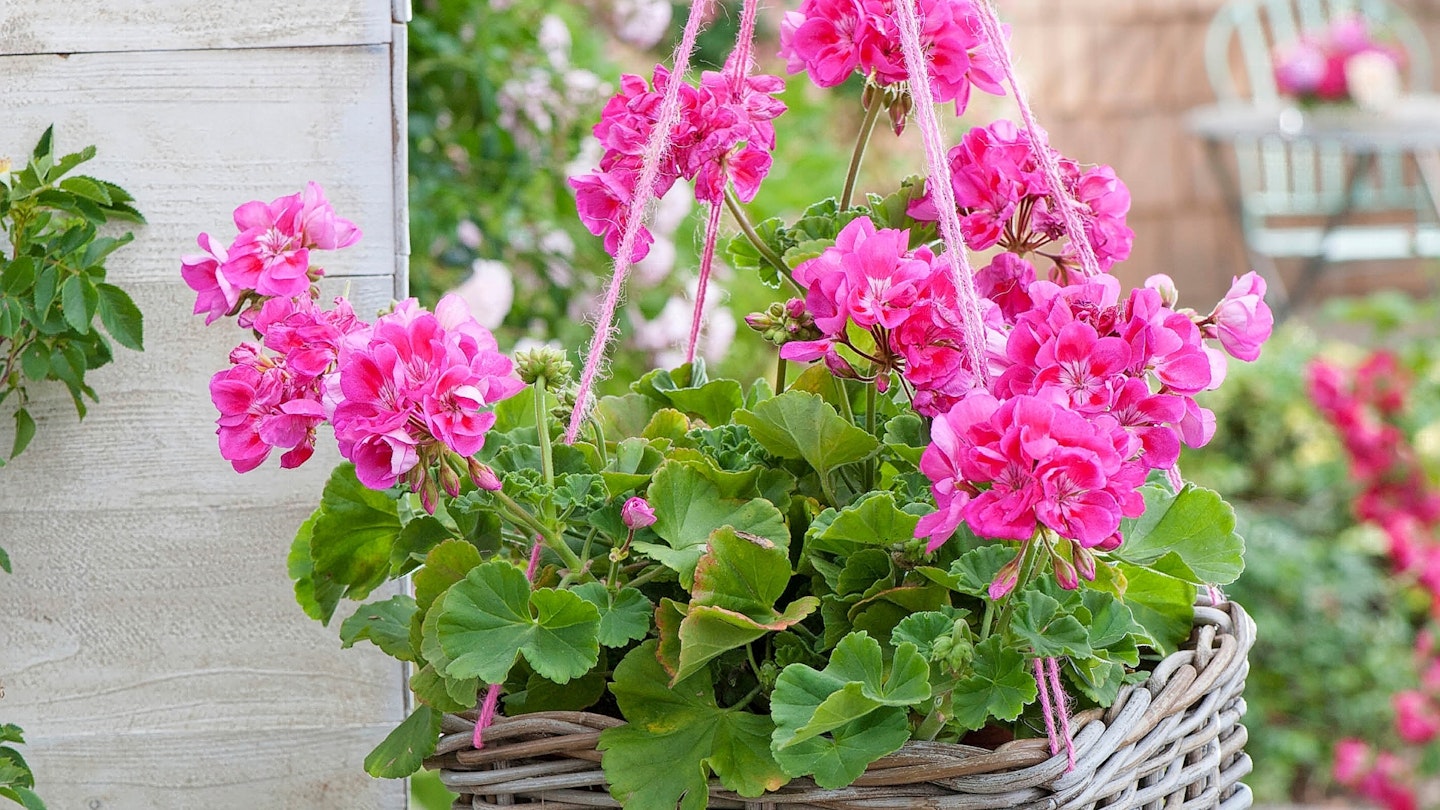
If you still want a traditional-looking hanging basket that doesn’t need constant watering, trailing/ivyleaved pelargoniums (often sold as geraniums) are a perfect choice and will thrive in a warm, sunny spot. They’ll need regular feeding in order to be smothered in flowers, so add some controlled-release plant food to the compost.
Tips for baskets:
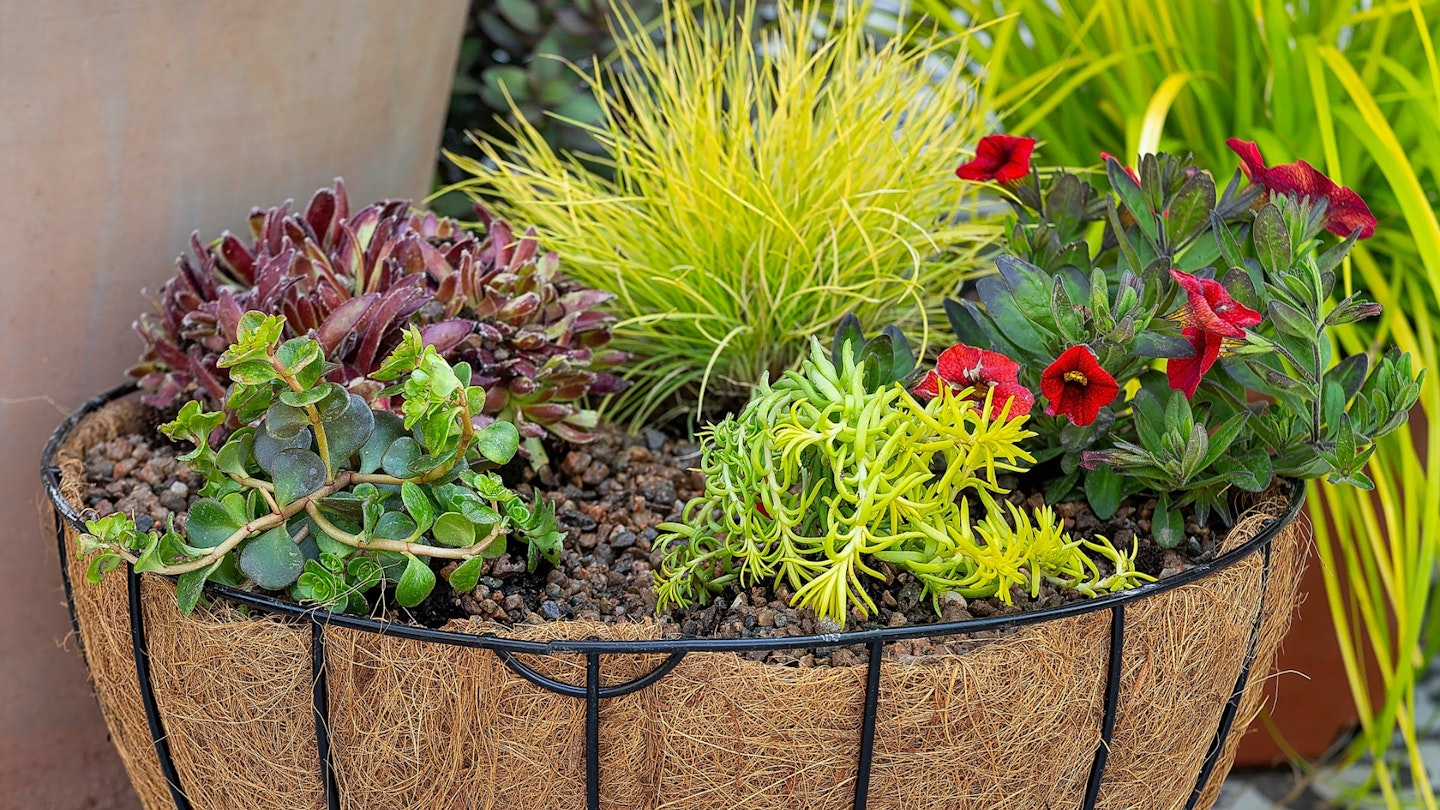
-
Some composts sold as hanging basket or container composts contain water-retaining agents, but these are best avoided if you’re growing a basket that only contains succulent plants because they prefer free drainage. Multi-purpose compost with a couple of handfuls of grit mixed in will be fine.
-
Check that you aren’t hanging a basket in a ‘rain shadow’. This is an area by a building that is completely sheltered from any rainfall - rainwater is perfect for these sorts of plantings.
Drought-tolerant evergreens for baskets:
Ivy
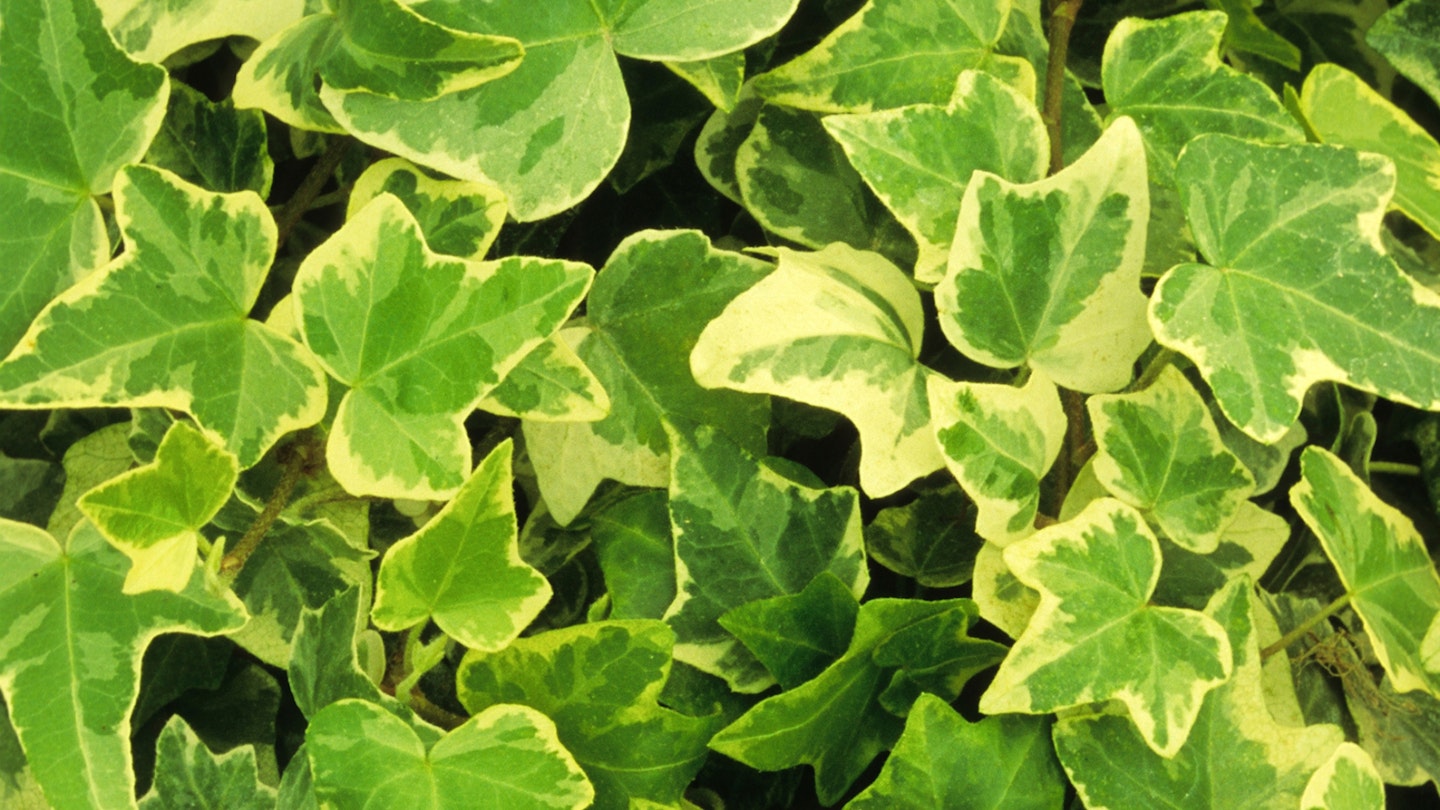
Ivy is a real team player that blends well with other plants and is invaluable if you want to put up a hanging basket in shade. Just trim it if it starts to get too long.
Hebe

Small hebes can start out as a basket centrepiece before planting out as large shrubs in a sunny spot. They have fleshy leaves that conserve moisture in dry spells. ‘Red Edge’ makes a neat, central plant.
Sempervivum
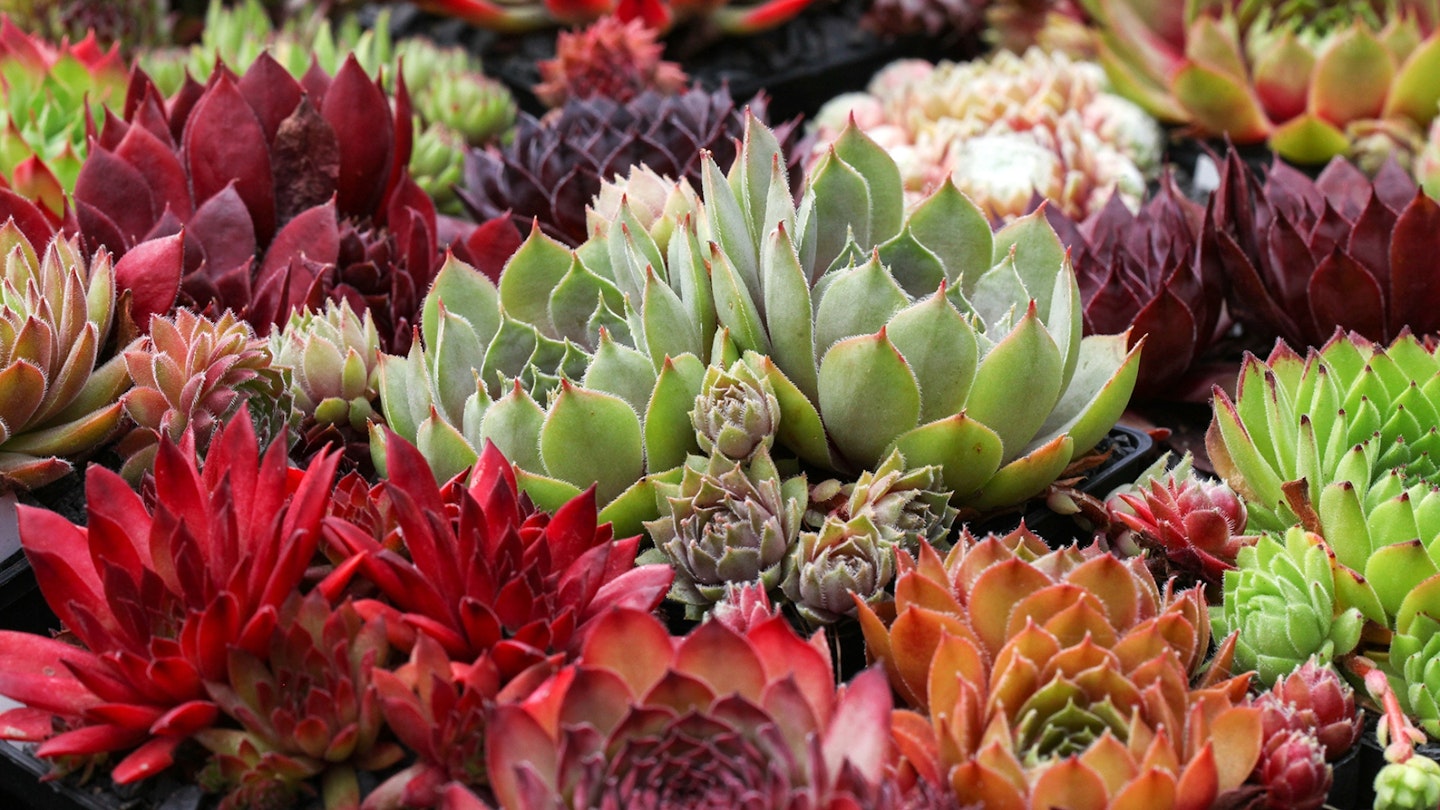
These hardy alpine plants need good drainage but little other special treatment and produce ‘babies’ that look great when they tumble over the edges of a basket on trailing stems. Easy to grow, they can also flower in very sunny spots and are good for introducing children to gardening.
Plant a drought-tolerant basket:
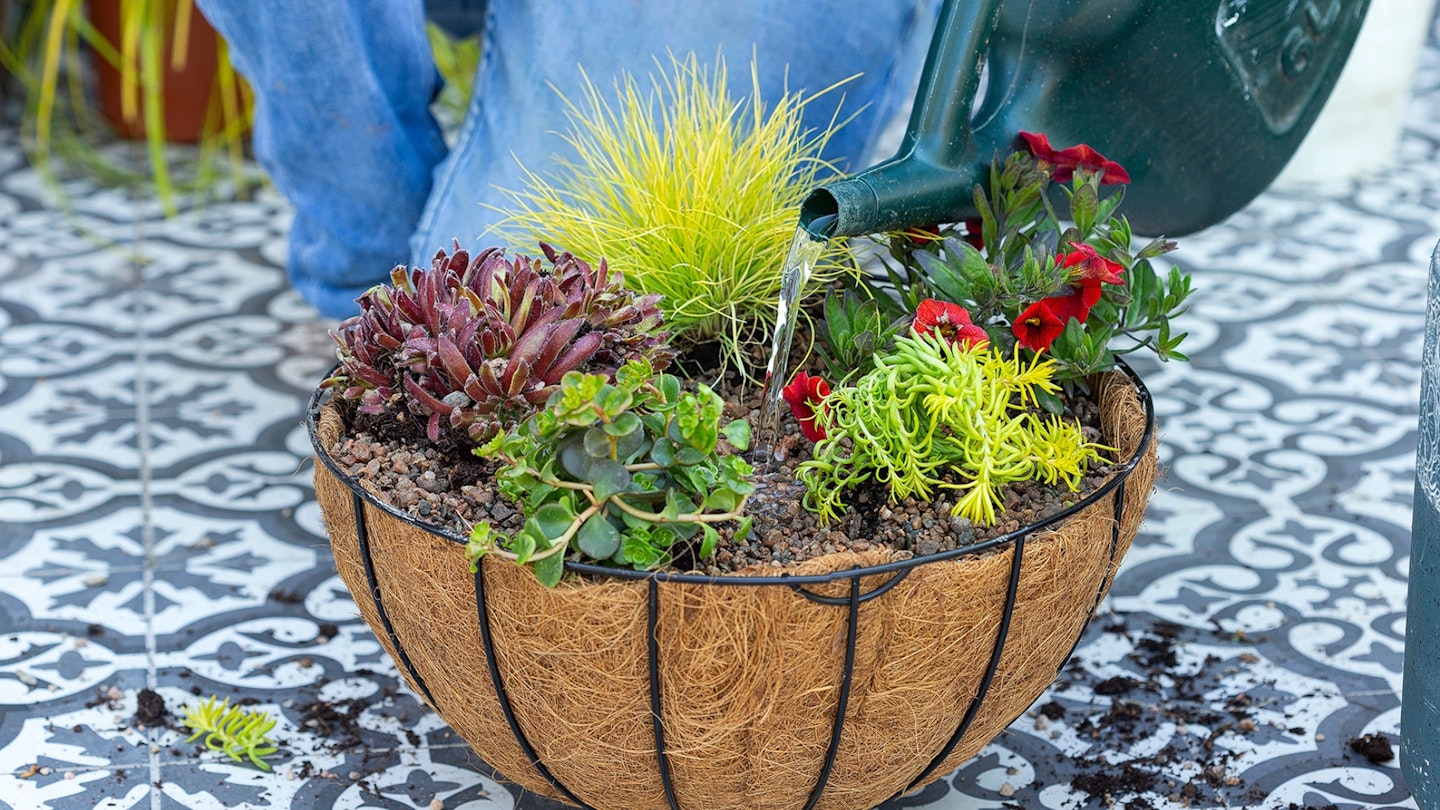
This basket is made up primarily of evergreens, with an annual trailing calibrachoa to provide flowers in summer. The two sedums ‘Coral Reef’ (green) and ‘Sediform Gold’ (yellow) will also trail, with the festuca grass and sempervivum being the ‘backbone’ plants. Lots of grit has been added to the compost and added as a mulch on top because these plants thrive in free-draining conditions.
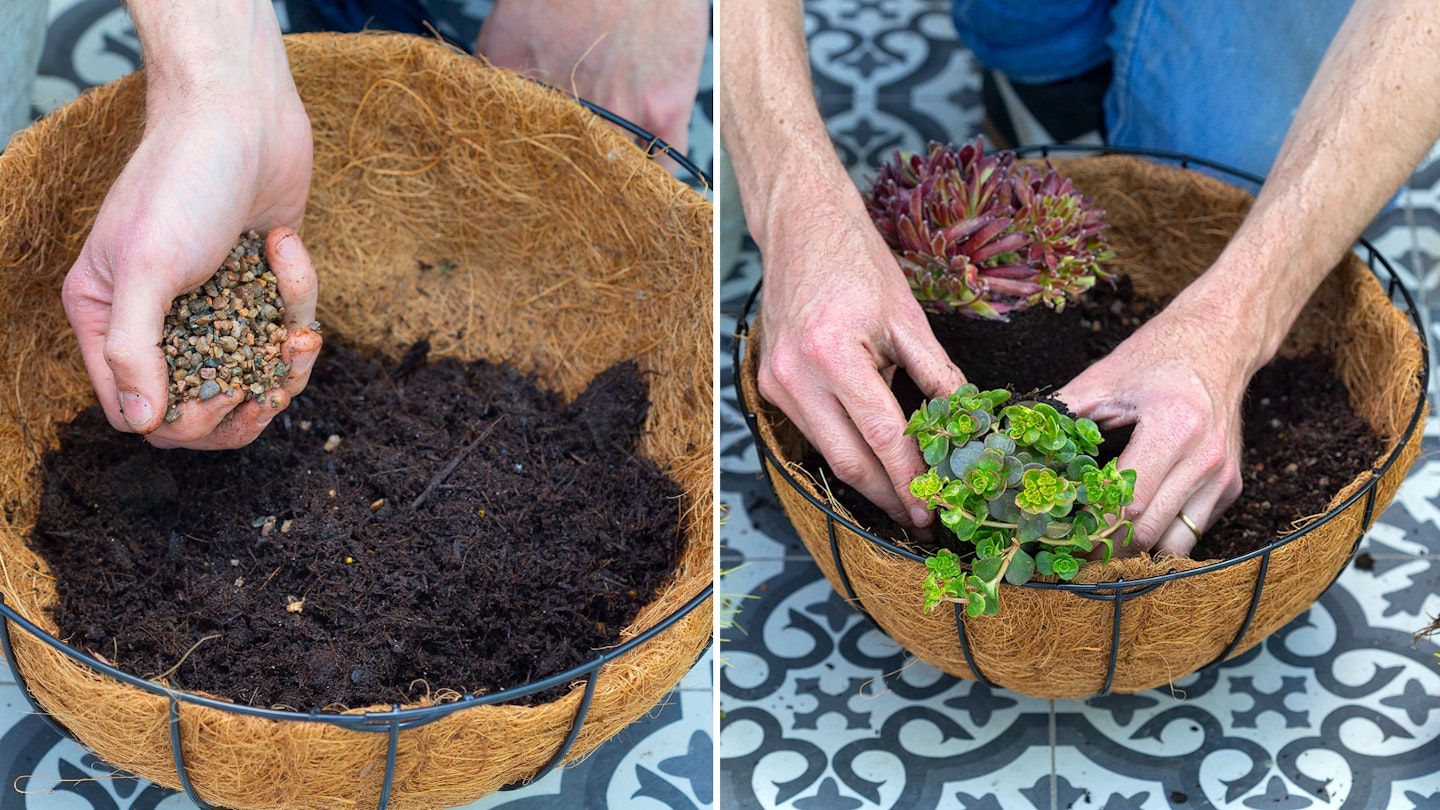
-
Mix two good handfuls of grit into the compost and break up any large clods to leave a crumbly texture. Half-fill the basket then play around with which plant you want to put where.
-
Place specimens on the compost surface to check the planting height. Angle trailing varieties such as sedum so the longest stems lean over the basket rim, keeping the plant base just below the rim.
-
Top dress each plant with a layer of horticultural grit, making sure that the grit goes all the way underneath the crown of each plant. This will help prevent them getting too wet in winter.
-
Water each plant in well and leave to settle for a few days before deciding on a place to hang the basket. A sunny, warm spot is best for a basket that contains succulents.

